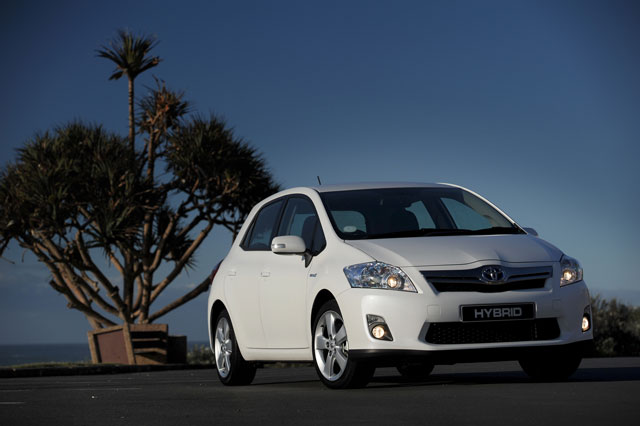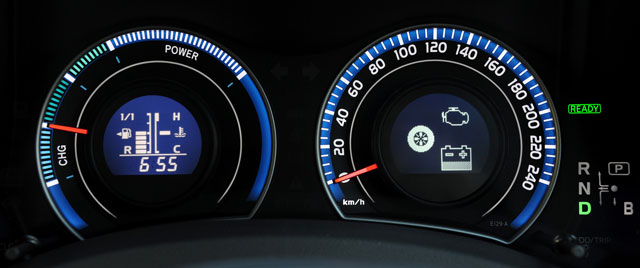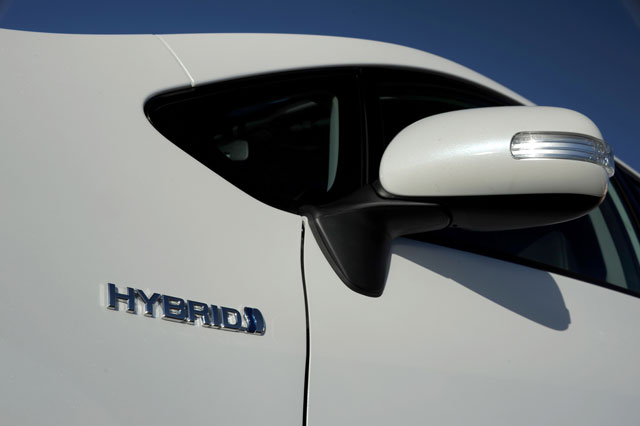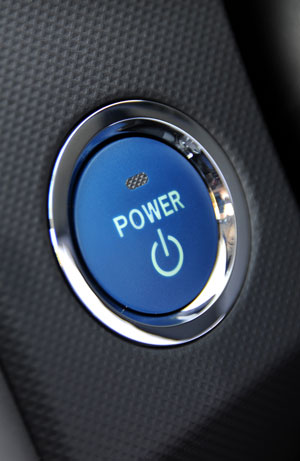
When people are asked to think of a hybrid vehicle, the first name that invariably pops into their heads is Toyota’s iconic Prius. But the Japanese carmaker is intent on making full hybrids — cars that can run solely on a battery-powered motor or a petrol engine or a combination of both — available across its range of passenger vehicles in the next few years.
The Auris is the most recent Toyota line-up to get the hybrid treatment, with the cheaper Yaris model next in line for later this year.
Hybrids are increasingly capturing the imagination of motorists not only in SA but worldwide as fuel prices continue to spike higher. Promising lower fuel consumption and, in most cases, reasonable performance, we’re seeing more of them on our roads.
Detractors will say that a turbo diesel is just as fuel efficient — and perhaps more so — and cheaper than hybrid competitors. But nothing beats the delight of starting up a hybrid and pulling off without the fuel-driven engine engaging. In fact, it can be driven in electric vehicle-only mode for several kilometres, provided you’re not accelerating up a sharp incline or going faster than 50km/h.
TechCentral spent the past week putting the top-end Auris XR HSD — list price, R299 600 — through its paces. There’s also a slightly cheaper XS HSD in the range, but it comes with smaller alloys and fewer of the creature comforts in the XR.
What we discovered in the XR was that below its rather plain-looking exterior (which is not necessarily a bad thing given the odd and somewhat controversial looks of the more expensive Prius), the fully automatic Auris is, for the price, a well-constructed technological marvel.
Before we get into the geeky gadgetry in the Auris, though, first a little about what’s under the bonnet. The XR HSD — which has the same full hybrid powertrain as the Prius — has a 1,8l petrol engine that delivers 73kW of power. The electric motor delivers a further 60kW for a combined 133kW with maximum acceleration from 0-100km/h of 11,4s. Torque is rated at 142Nm from the petrol engine and a further 207Nm for the electric system.

Fuel economy is rated at 4l/100km from the 45l tank, although in reality, even though we tried hard to be feather-footed, we weren’t able to move the needle much below 6l/100km. That’s still respectable for a vehicle with a 1,8l petrol engine. After each drive, the car tells you how you did in terms of saving fuel. Clearly, we didn’t really push the Auris to its limits — it never failed to rate our driving style as “excellent”.
Unlike some other hybrids — most notably the Prius — the Auris does not try particularly hard to stand out from the crowd. Apart from a few minor design tweaks, such as a lower grille and modified front bumper, coupled with “Hybrid” badging on the left and right wings and a small “Hybrid Synergy Drive” logo on the vehicle’s rear, it’s hard to tell the XR HSD apart from regular petrol engine-driven vehicles in the range.
But behind the wheel it’s a radically different driving experience. Upon entering the car — it uses a smart keyless entry and exit system — and pressing the big start button to the left of the steering wheel, it’s not clear you’ve actually started the vehicle because the petrol engine doesn’t kick in until it’s needed. Pulling away, the only sounds you’ll hear are the rubber crunching the pavement. It’s a strangely peaceful experience. Pulling into and out of office parks over the past week, we turned a few heads from security guards who were clearly wondering why the car wasn’t making a sound. Even at high speeds, the Auris is quiet thanks to advanced sound-proofing technology used by the Toyota designers.
The vehicle has four driving modes. The first, “EV”, allows you to drive the car entirely using the electric motor, provided there is sufficient energy stored in the battery pack and assuming you keep below 50km/h. The second, “Eco”, optimises fuel economy. The third, “Pwr”, delivers sharper acceleration when needed and more than enough speed to navigate tricky overtaking situations. Driven in normal mode, with the manually controlled settings above switched off, the car adjusts its settings dynamically, providing power when you need it and delivering maximum fuel efficiency when you’re not flat-footing it.
The cabin itself is spacious, with ample legroom, even at the rear. The seats, made of a combination of Alcantara composite material and leather, are comfortable enough and are fully adjustable. Boot space is a little compromised due to the battery pack but there’s still space for quite a few bags in the 283l space that remains.
But this is a tech site, so before we use up all this space dwelling on less techy aspects like the 17-inch wheels, the cleverly placed cup holders or the air-conditioning system, let’s take a look at the gadgetry that Toyota has crammed into the Auris XR HSD that makes it a geek’s delight.

The audio system is probably as good a place to start as any. Though it’s not the most high-end or powerful radio/CD player in the market, it delivers a very respectable sound quality (if perhaps slightly on the tinny side) and, thanks to a USB port and a 3,5mm audio jack in the upper of two glove compartments, it’s fully wired for your iPod or smartphone in its standard configuration.
The audio system also features full Bluetooth functionality and setting up a mobile phone — to function as a music player or to hook it up for hands-free telephone calls — is easy and works a treat in combination with dedicated buttons on the steering wheel. And there’s no need to pair a phone each time. Once it’s set up, they pair automatically each time you get into the car.
The audio system also supports MP3 and WMA playback and when an iPod is connected to the USB port you can skip tracks using the controls on the steering wheel. Unfortunately, it doesn’t display the names of your songs on the radio’s front-facing display.
The instrument panel is also packed full of geeky goodness. Pressing a button on the steering wheel brings up a smorgasbord of information about the vehicle. For example, it shows you whether the battery is draining or charging, whether it’s drawing power from the electric motor or petrol engine or both, the outside air temperature, the average and current fuel consumption, and your average speed.

The rear-view mirror is a treat, too, featuring an integrated, full-colour display connected to a rear camera to help you into and out of tight parking spots when you put the car into reverse. This, used in conjunction with park distance control that warns you when you’re nearing an obstruction by beeping ever-more quickly, is particularly useful for tricky parallel parking. It’s the sort of feature that’s usually an expensive optional extra.
The rear-view mirror also uses “electro-chromatic” technology and filters out the harsh headlights of thoughtless drivers who leave their high beams switched on.
The car also features windscreen wipers that switch themselves on automatically when it starts raining. And the headlights also switch themselves on automatically — if this setting is engaged — when it detects that the light is fading.
There’s no integrated GPS in the Auris, which is a pity, but given that would have probably pushed the price well beyond R300 000, it’s perhaps not surprising Toyota hasn’t thrown in the kitchen sink on this model.
Though the Auris XR HSD doesn’t offer some of the features you’ll find in more luxurious cars, it’s one of the best kitted-out cars in its segment and for its price. If you’re a geek at heart and also want to tackle forever spiralling fuel prices (and reduce your harmful carbon emissions in the process), it’s well worth a look.
The Auris comes standard with a five-year or 90 000km service plan. The hybrid power components, including the battery, have a 195 000km or eight-year warranty. — (c) 2012 NewsCentral Media




